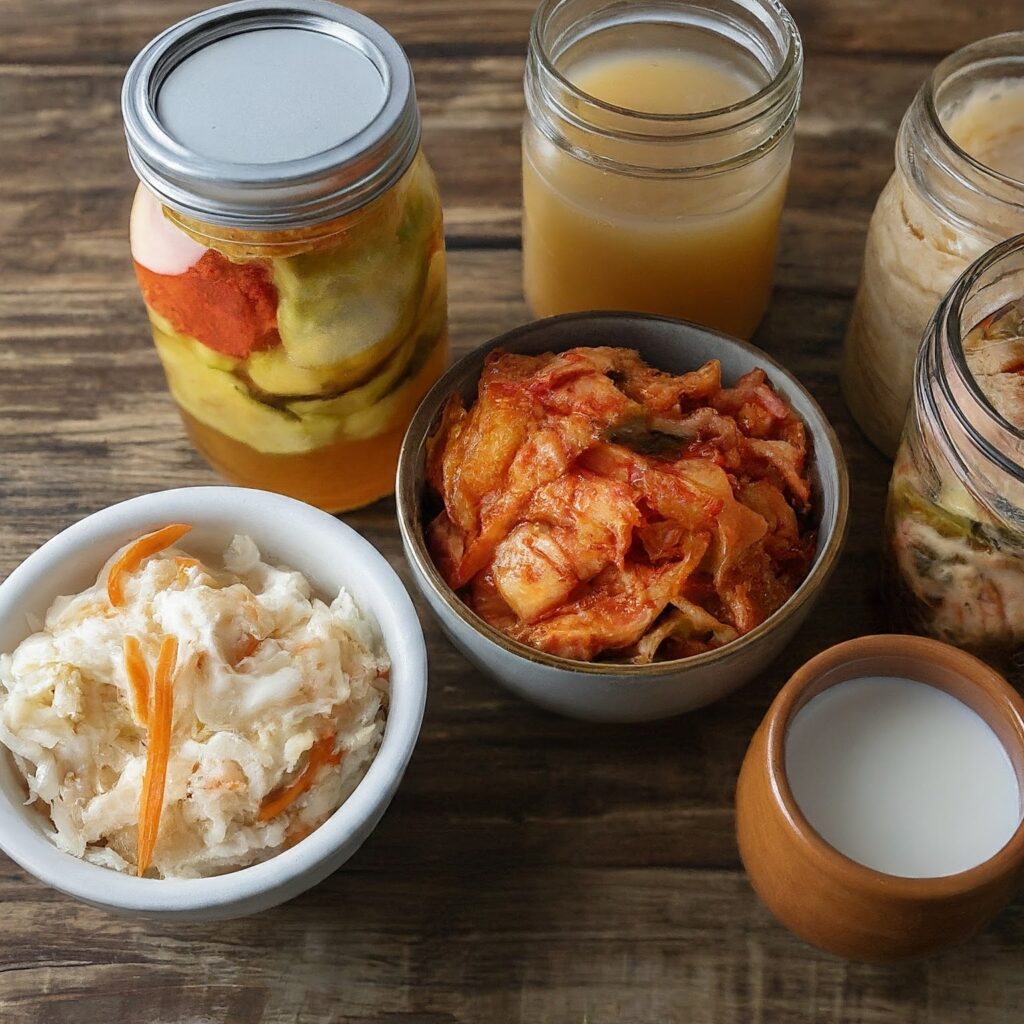Fermented foods have gained popularity not just for their unique flavors but also for their numerous health benefits. From tangy sauerkraut to probiotic-rich yogurt, fermented foods have been a staple in various cultures for centuries. This article delves into the fascinating world of fermentation, covering everything from its health advantages to how you can start fermenting foods at home.

Introduction to Fermentation
Fermentation is a natural process that involves the breakdown of sugars by bacteria and yeast. This process not only preserves foods but also enhances their nutritional value and flavor profile. Across cultures, fermentation has been used to create a wide range of foods and beverages, each with its own distinct taste and texture.
Health Benefits of Fermented Foods
One of the main reasons fermented foods have gained acclaim is their potential health benefits. They are known for:
- Improved Digestive Health: Fermented foods contain probiotics, beneficial bacteria that support gut health and aid in digestion.
- Enhanced Nutrient Absorption: Fermentation can increase the availability of certain nutrients, making them easier for the body to absorb.
- Immune System Support: Probiotics found in fermented foods may help strengthen the immune system and reduce inflammation.

Popular Fermented Foods
Explore some of the most beloved fermented foods from around the world:
- Kimchi: A spicy Korean staple made from fermented vegetables, typically cabbage and radishes.
- Sauerkraut: A German favorite made from fermented cabbage, known for its tangy flavor.
- Yogurt: A versatile dairy product fermented with live cultures, offering probiotics and calcium.
- Kombucha: A fizzy tea drink fermented with a SCOBY (symbiotic culture of bacteria and yeast), appreciated for its probiotic properties.
- Fermented Soy Products: Including miso, tempeh, and soy sauce, which are integral to Japanese and Indonesian cuisines.

How to Ferment Foods at Home
Ready to try fermenting your own foods? Here’s how you can get started:
- Choose Your Ingredients: Select fresh, high-quality ingredients for optimal fermentation results.
- Prepare Your Equipment: Clean and sterilize glass jars, fermentation weights, and lids before use.
- Follow a Recipe: Use trusted recipes for your chosen fermented food to ensure safety and success.
- Monitor the Fermentation Process: Keep an eye on your fermenting foods, ensuring they are stored in a stable, cool environment away from direct sunlight.
- Enjoy Your Fermented Creations: Once fermented, store your foods properly and enjoy them as condiments, snacks, or accompaniments to meals.

Incorporating Fermented Foods Into Your Diet
Adding fermented foods to your diet is simple:
- As Side Dishes: Serve fermented vegetables like kimchi or sauerkraut alongside main meals.
- In Smoothies: Add yogurt or kefir to your morning smoothies for a creamy texture and probiotic boost.
- As Snacks: Enjoy fermented pickles or kombucha as refreshing snacks throughout the day.
Fermentation Around the World
Discover how different cultures embrace fermentation in their culinary traditions:
- Asian Fermentation: From Japanese miso to Indian dosas, fermentation is integral to Asian cuisine, providing unique flavors and health benefits.
- European Fermentation: European countries celebrate fermentation with cheeses, sausages, and breads that boast complex flavors and textures.
Fermented foods offer a gateway to exploring new tastes and improving your overall well-being. Whether you’re new to fermentation or looking to expand your culinary repertoire, incorporating these probiotic-rich foods into your diet can lead to a healthier and more flavorful lifestyle.

fugiat nulla adipisci quo accusamus odit explicabo. inventore ipsum nemo fugiat alias omnis nesciunt.